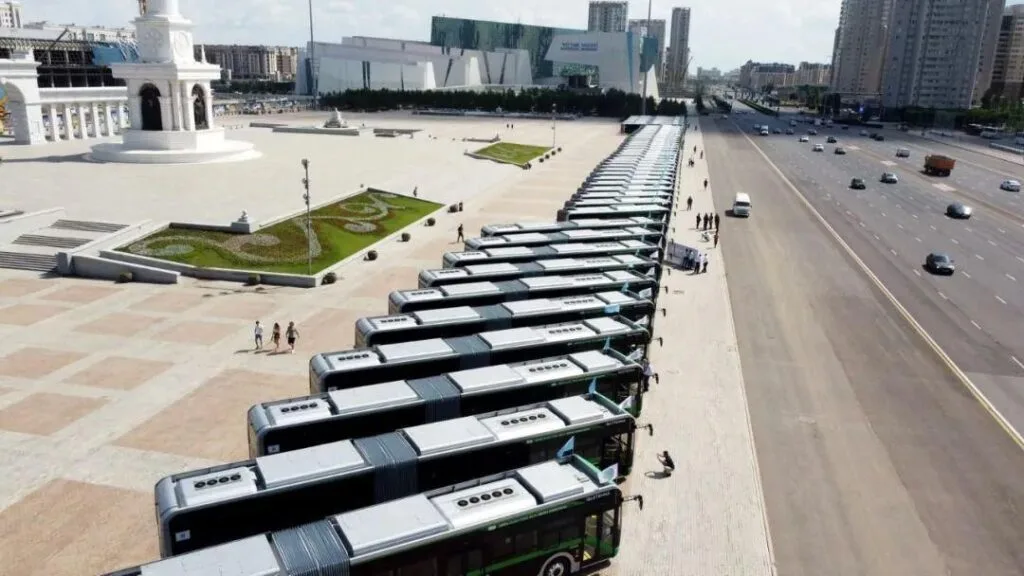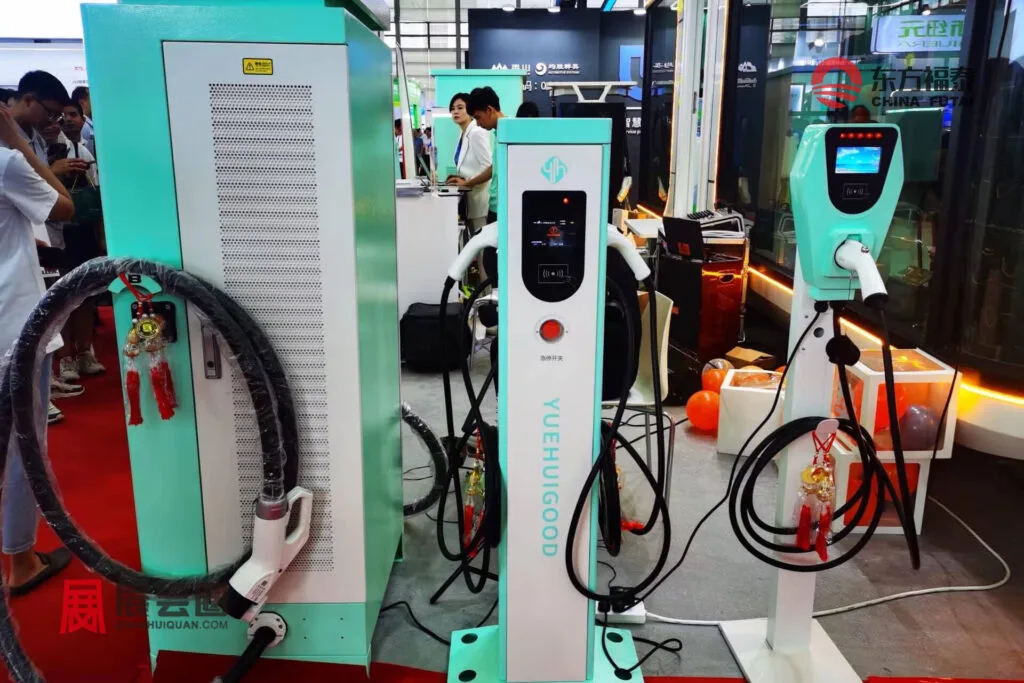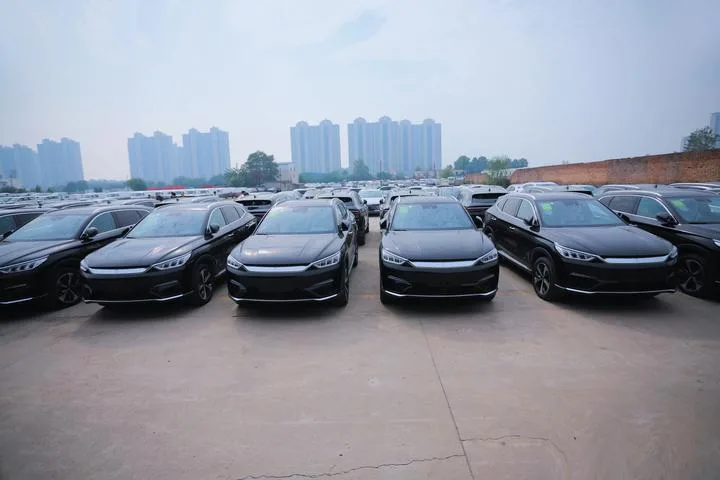Kazakhstan New Energy Electric Vehicles and Charging Piles Market Analysis
Kazakhstan, the economic giant of Central Asia, is in a critical period of energy transition. The country is known for its rich oil and gas resources, but is now facing challenges of energy security and environmental pollution. In order to address these challenges and promote economic diversification, the government of Kazakhstan is giving a major push to the development of new energy sources and electric mobility. According to the latest market analysis, Kazakhstan’s new energy and electric vehicle market is growing strongly despite its late start. Over the past year, the number of electric vehicles has increased significantly by 65.4% to 812. Nonetheless, EVs still account for less than 0.02% of the country’s total vehicle fleet, indicating a huge market potential.
In terms of charging infrastructure, Kazakhstan currently has a limited number of charging stations, concentrated in the two main cities of Almaty and Nursultan. According to eDrive.kz, there are only 81 charging stations available in the country. This falls far short of market demand, especially considering that Kazakhstan’s automotive industry association, Kazavtoprom, expects that in order to support the growth of e-mobility, the country will need to establish at least 40,000 charging posts or 8,000 charging stations by 2030. This demand provides a huge opportunity for the charging piles market.
The new energy electric vehicle and charging pile market in Kazakhstan, although currently small, is expected to achieve rapid growth in the future with government policy support and increasing social acceptance. This not only provides a favorable market environment for manufacturers, distributors, service providers and investors of electric vehicles and charging piles, but also opens up a new path for the country’s green transformation and sustainable development.
Kazakhstan’s new energy electric vehicle and charging pile industry segmentation
Kazakhstan’s new energy electric vehicle and charging pile industry segmentation can be divided from multiple perspectives, including product type, technology level, market demand and competitive landscape. The following is a detailed analysis based on these dimensions:
Product Type Segmentation
Electric Passenger Vehicles & Charging Piles: This category includes sedans, SUVs, buses, etc., which are mainly used for personal or family travel. The advantages of electric passenger cars include energy saving and environmental protection, low operating costs, low noise, easy maintenance, etc. The corresponding charging piles are divided into fast charging piles and charging piles. The corresponding charging piles are categorized into fast charging piles and slow charging piles, as well as AC charging piles and DC charging piles.
Electric buses and charging piles: Mainly serving the urban public transportation system, the advantages include reducing exhaust emissions, improving operational efficiency and lowering operational costs. Types of charging piles include station charging piles and yard charging piles, as well as mechanical power exchange, wireless charging, rail charging and other methods.
Electric Logistics Vehicles and Charging Piles: Including vans, trucks, trailers, etc., mainly used for urban logistics and distribution. These vehicles improve transportation efficiency, reduce transportation costs, and adapt to urban traffic rules. Charging piles are divided into special charging piles and public charging piles.
Electric motorcycles and charging piles: Including motorcycles, electric bicycles, electric tricycles, etc., suitable for personal or small commercial trips. These vehicles are flexible, convenient, inexpensive and have a long range. Charging piles are also divided into specialized charging piles and public charging piles.

Technology Level Breakdown
Traditional electric vehicles and charging piles: Lead-acid batteries or nickel-metal hydride batteries are used as the power source, and AC motors or DC motors are used as the drive system. The technology level of these vehicles and charging piles is relatively low.
New energy electric vehicles and charging piles: using lithium-ion batteries or other new types of batteries as the power source and permanent magnet synchronous motors or brushless DC motors as the drive system. These vehicles and charging piles represent the mainstream of the industry and a high technical level.
Intelligent Electric Vehicles and Charging Piles: Intelligent transformation using internet, big data, artificial intelligence and other technologies to improve safety, comfort and convenience. The charging pile adopts wireless connection or contactless connection, representing the cutting edge of the industry and the highest technical level.
Although Kazakhstan’s new energy EV and charging pile industry started not long ago, it has formed a diversified product and technology structure, laying a solid foundation for future development. With the advancement of technology and market expansion, it is expected that these market segments will further develop and mature

Kazakhstan’s Government Policy on New Energy Electric Vehicles and Charging Piles
The government of Kazakhstan attaches great importance to the development of new energy electric vehicles and charging piles industry, and has formulated a series of policies to support the growth of this industry. The following are the main policy measures in the field of new energy electric vehicles and charging piles in Kazakhstan:
Energy Strategy 2030: This strategy aims to realize energy security, energy efficiency and energy diversification. New and renewable energy is an important part of this strategy, of which electric vehicles and charging piles are important vehicles for new and renewable energy. The government plans for new and renewable energy sources to account for 10% of total energy consumption and electric vehicles to account for 10% of the total vehicle fleet by 2030.
Environmental Protection Policy: The government of Kazakhstan has developed the National Environmental Action Plan 2020, which aims to reduce greenhouse gas emissions, improve air quality, and combat climate change. Transportation is one of the main sources of GHG emissions, and electric vehicles and charging piles are effective measures to reduce transportation emissions. The government plans to reduce GHG emissions by 15% from 2008 levels and air pollutant emissions by 10% from 2010 levels by 2020.
National Strategy for Industrial Innovation and Development 2025: The strategy aims to promote industrial structural transformation, improve industrial competitiveness and create jobs. New energy vehicles and charging equipment are one of the key areas of industrial innovation development, and electric vehicles and charging piles are the core products of new energy vehicles and charging equipment. The government plans that by 2025, the output value of new energy vehicles and charging equipment will reach US$10 billion, creating 100,000 jobs.
Financial subsidies and tax incentives: Subsidies of up to 30% for EV purchasers, tax rebates of up to 10% for EV producers, exemption of import duties for EVs, exemption of VAT for EVs and charging piles, and so on.
Financial loans and credit guarantees: The government also provides financial loans and credit guarantees to support the production, sale and use of EVs and charging piles.
Infrastructure development and technical support: The government plans to develop and establish infrastructure such as charging piles and charging stations by 2025 to help it realize a seamless transition from oil vehicles to electric vehicles.
Kazakhstan New Energy Electric Vehicle and Charging Pile Market Trends
Kazakhstan’s new energy electric vehicle and charging pile market is at a critical stage of development. With the transformation of global energy structure and the rise of environmental awareness, this Central Asian country is also actively adjusting its energy policy to adapt to the new market trend. According to the latest market analysis, Kazakhstan’s EV market has seen significant growth over the past year, with the number of EVs increasing by a whopping 65.4% to 812 units. Despite this impressive growth rate, EVs still account for less than 0.02% of the total number of vehicles in the country, suggesting that the market has significant room for growth.
Infrastructure development of charging piles is one of the key factors driving the EV market. Currently, the number and coverage of charging piles in Kazakhstan are relatively low, with only 81 charging stations available across the country, and they are mainly concentrated in the cities of Almaty and Nursultan. In order to support the development of e-mobility, Kazakhstan needs at least 40,000 charging posts or 8,000 charging stations with 5 charging posts each across the country. This demand provides a huge opportunity for the charging pile market.
Looking ahead, the new energy electric vehicle and charging pile market in Kazakhstan is expected to continue to grow at a rapid pace. Government support policies, technological advancements, and social acceptance of green mobility will be important factors driving the market. With the improvement of charging infrastructure and the advancement of electric vehicle technology, the number of electric vehicles is expected to reach 6,300 by 2030, and the number of charging piles is expected to increase significantly to meet the market demand.
Overall, Kazakhstan’s new energy electric vehicle and charging pile market is ushering in a period of opportunity for rapid development, despite its late start. With the guidance of government policies and the growth of market demand, this sector is expected to become an important force driving the country’s economic diversification and green transformation.
Overview of New Energy Electric Vehicle and Charging Pile Industry in Kazakhstan
Kazakhstan’s new energy electric vehicle and charging pile industry, although a late start, but in the government’s vigorous promotion and market demand under the dual role, is gradually showing its great potential for development. 2024, this industry in Kazakhstan’s economic structure occupies a more and more important position, and become a key force to promote the country’s economic diversification and green transformation.
First of all, in terms of industry scale, although the sales of new energy EVs in Kazakhstan do not account for a high proportion of the total sales of automobiles, the growth rate is rapid. 2023, the number of new energy EVs sold was 815, of which 615 pure electric vehicles were sold, accounting for 75.5% of the sales of new energy EVs. This data reflects that consumer acceptance of new energy EVs is gradually increasing.
In terms of charging piles, although the number and coverage of charging piles in Kazakhstan are relatively low at present, the number of charging piles is expected to increase rapidly as the government emphasizes the construction of charging infrastructure. According to the Ministry of Energy, the charging pile market in Kazakhstan will reach 8,000 charging stations by 2030, a 3,900% year-on-year increase.
In addition, Kazakhstan’s new energy electric vehicle and charging pile industry chain involves a number of links, including batteries, motors, electronic controls, complete vehicles, charging piles, charging networks, and power supply. Each link has different players and competitors, forming a complex ecosystem. Currently, Kazakhstan mainly relies on imports in key technology areas such as batteries, motors, and electronic controls, but with the development of the local industry, it is expected to gradually achieve technological autonomy.
Kazakhstan’s new energy electric vehicle and charging post industry is experiencing a transition from start-up to rapid development. With the support of government policies, this industry is expected to usher in rapid development in the next few years, injecting a strong impetus for the development of green mobility and environmental protection in the country.

Kazakhstan New Energy Electric Vehicle and Charging Post Market Dynamics
The dynamics of Kazakhstan’s new energy electric vehicle and charging pile market demonstrates the active development and future potential of this field. 2024, the market witnessed a number of important progress and changes, which are not only reflected in the sales figures, but also in industrial cooperation, technological innovation, and policy support, etc. In terms of market size, Kazakhstan’s new energy electric vehicle and charging pile market is expected to grow in the next few years.
Firstly, in terms of market size, Kazakhstan’s new energy electric vehicle sales continue to grow. According to the latest market report, the number of electric vehicles has grown significantly over the past year, and although they still account for a relatively small percentage of the total number of vehicles in the country, this growth trend signals a possible market explosion in the coming years.
In terms of industrial cooperation, Kazakhstan is actively building partnerships with international partners to accelerate the development of the local new energy EV industry. For example, Kazakhstan’s Ministry of Industry and Infrastructure Development and China’s Jianghuai Automobile Group have signed a cooperation agreement aimed at promoting cooperation in the field of new energy vehicles and charging piles, which will help to enhance Kazakhstan’s technological level and market competitiveness in this field.
Technological innovation is also a key factor driving market development. Charging pile technology in Kazakhstan is advancing to meet the growing market demand. With the improvement in charging technology, the charging speed and compatibility of charging piles have increased, which is crucial to promote the popularity and convenience of electric vehicles.
In terms of policy support, the Kazakhstan government continues to implement a range of measures to promote the development of the new energy EV and charging pile industry. These include financial subsidies, tax incentives, financial loans and credit guarantees, etc. These policies have significantly reduced costs for consumers and producers and stimulated market activity.
The dynamics of Kazakhstan’s new energy electric vehicle and charging pile market show that the sector is in a rapid development phase. With technological advancement, industrial cooperation and support from government policies, this market is expected to witness greater growth and development in the coming years.
In the market for new energy electric vehicles and charging piles in Kazakhstan, the market share of brands is an important indicator of the competitive landscape of the market. Based on the market analysis to 2024, the new energy electric vehicles and charging piles market in Kazakhstan consists of multiple brands, including local and international brands.
Local brands such as KEVCN and Astana Motors hold a share of the market, and these brands usually benefit from localization advantages such as better market adaptation and government support.Local brands such as KEVCN and Astana Motors have an advantage in providing products that are suited to the needs of the Kazakhstani market, which has enabled them to hold a a place in the market.
Meanwhile, international brands such as ABB, Siemens and Schneider are also active in the Kazakhstan market, offering a range of new energy electric vehicles and charging post solutions. These international brands enjoy high reputation and influence in the market due to their advanced technology and extensive global experience.
Although the new energy electric vehicle and charging pile market in Kazakhstan is still in its infancy, it is expected to see rapid growth in the next few years as a result of government policy support and growing market demand. Both local and international brands have the opportunity to increase their market share through technological innovation and marketing strategies.
The market share of brands in Kazakhstan’s new energy electric vehicle and charging post market shows a diversified competitive pattern. The future development of the market will depend on the brands’ technological innovation capability, product quality and responsiveness to market demand.




